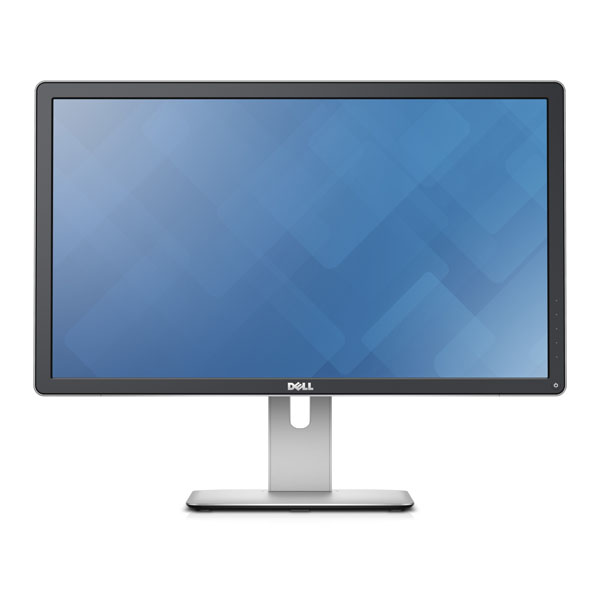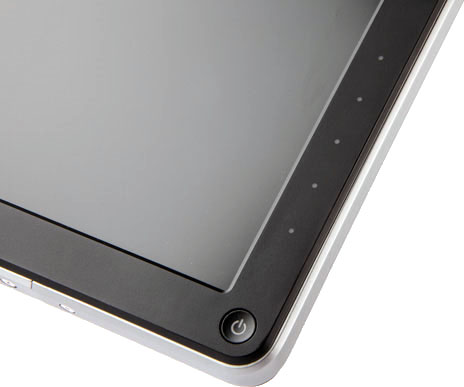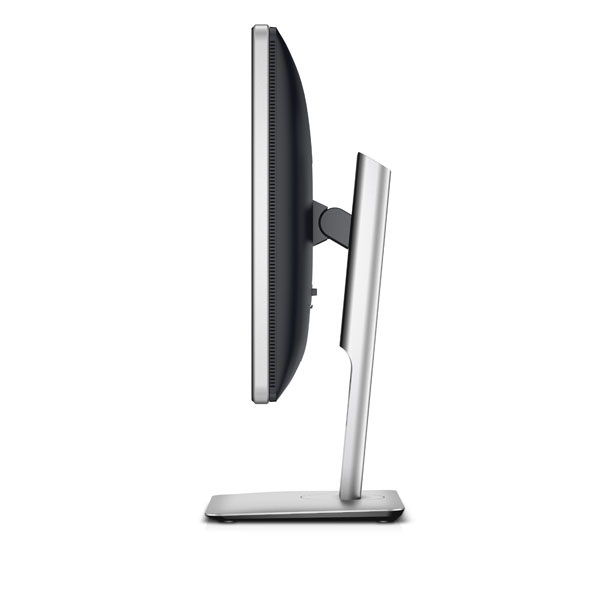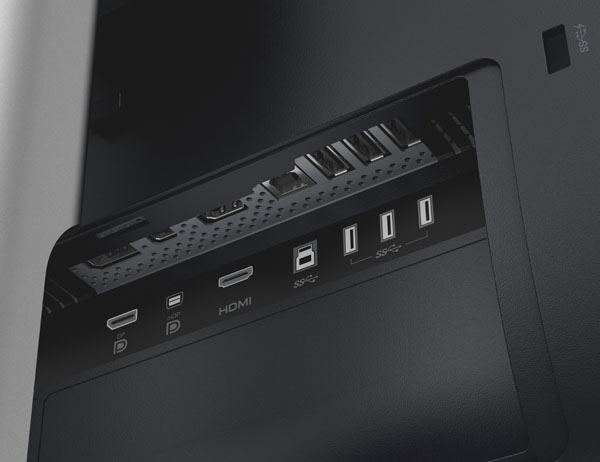Dell UltraSharp 24 Ultra HD Monitor: The $1300 UP2414Q
Dell now offers three Ultra HD monitors for your consideration. We tested the 32-inch UP3214Q last month. Today, we’re looking at the 24-inch UP2414Q. Despite its smaller size, this is still a $1000+ display. Can Dell make the trade-off worthwhile?
Packaging, Physical Layout, And Accessories
Dell’s recent packaging eliminates most of the Styrofoam blocks typically encountered in monitor cartons. Replacing them are carefully-shaped parts made of corrugated cardboard. The new system seems to have enough strength to withstand the rigors of shipping, and is easier to recycle. Our sample arrived without a scratch.
Again, the UP2414Q includes a calibration data sheet specific to each monitor that shows results for grayscale tracking, color, gamma, and screen uniformity. Our test results support Dell’s claims of errors below two Delta E for both the sRGB and Adobe RGB color gamuts, and gamma is spot-on. Grayscale tracking turns out to be a tad over two Delta E, but still lower than I could see with my eyes. We were also able to duplicate Dell’s results in the screen uniformity test when we turned the compensation on.
Also included in the box are cables for USB 3.0, DisplayPort, and an IEC power cord. Drivers and manuals are provided on a CD-ROM.
Product 360
The base and upright are made from a satin-finished aluminum that looks very high-end. Dell uses the same material in the bezel surround, which is visible from the side. The screen’s frame is slightly narrower than average at 20 millimeters. Height adjustment spans a substantial 5.2 inches, and you can tilt the screen up to 15 degrees and swivel it 45 degrees in either direction. Rotation to portrait mode is supported, and an option in the OSD flips the image automatically. All the movements are very precise, offering just the right level of resistance.
Not surprisingly, the anti-glare layer is just as good as the one we saw on Dell's UP3214Q. It rejects light extremely well and still looks super-sharp. Just imagine how small text and other Windows objects look on a 24-inch Ultra HD screen. Even though OS-level DPI scaling is pretty much mandatory, this monitor completely earns its UltraSharp designation.
Controls on the UP2414Q work exactly like Dell's other displays. In the lower-right corner is a tactile power toggle followed upwards by five back-lit buttons. Touching any of them brings up an OSD that sits right next to the screen’s edge. We really like Dell’s user interface. Once you get the hang of it (which takes very little time), you can maneuver through the extensive menus with ease and efficiency.
The UP2414Q is just over two inches thick, so it won’t win any awards for compact dimensions. But there are no extraneous bulges to get in the way of wall mounting. The left side (not shown) sports an SD card slot, which is activated through the input panel's USB connection. In the image above, you can see the aluminum strip that surrounds the bezel very clearly.
Get Tom's Hardware's best news and in-depth reviews, straight to your inbox.
The back is an all-plastic piece that tapers smoothly from side to side and bottom to top. Ventilation is handled by narrow grills at the top and bottom. The upright comes off without tools to reveal a 100 mm VESA mount. You can just make out the input panel on the bottom, which is hidden by a removable plastic cover. And a small hole in the upright takes care of cable management.
We’re seeing more and more monitors without VGA or DVI inputs. The UP2414Q includes only HDMI 1.4a and two DisplayPort connectors. One of them is the mini version, supported by the bundled mini-to-full-size cable. Dell claims compatibility with DisplayPort 1.2, which is sufficient for 3840x2160 at 60 Hz through multi-stream compatibility. We have yet to see a computer monitor with an HDMI 2.0 interface, but that's all the same given a lack of similarly-equipped graphics cards. Then again, we just reviewed a Toshiba 4K HDTV with HDMI 2.0 support, so it's only a matter of time.
The UP2414Q doesn't have built-in speakers, but the same soundbar Dell offers with its UP3214Q is also available for this screen.
Current page: Packaging, Physical Layout, And Accessories
Prev Page Dell UP2414Q 24" Ultra HD Monitor Review Next Page OSD Setup And Calibration Of Dell's UP2414Q
Christian Eberle is a Contributing Editor for Tom's Hardware US. He's a veteran reviewer of A/V equipment, specializing in monitors. Christian began his obsession with tech when he built his first PC in 1991, a 286 running DOS 3.0 at a blazing 12MHz. In 2006, he undertook training from the Imaging Science Foundation in video calibration and testing and thus started a passion for precise imaging that persists to this day. He is also a professional musician with a degree from the New England Conservatory as a classical bassoonist which he used to good effect as a performer with the West Point Army Band from 1987 to 2013. He enjoys watching movies and listening to high-end audio in his custom-built home theater and can be seen riding trails near his home on a race-ready ICE VTX recumbent trike. Christian enjoys the endless summer in Florida where he lives with his wife and Chihuahua and plays with orchestras around the state.
-
dweezled This is a joke right? Dell making yet another mockery of the monitor market.Reply
Why oh why when you can get the latest 10-bit AH-IPS technology in the 2560 x 1600 30" Crossover Black Tune 30x for $700?
-
s3anister Reply13121759 said:This is a joke right? Dell making yet another mockery of the monitor market.
Why oh why when you can get the latest 10-bit AH-IPS technology in the 2560 x 1600 30" Crossover Black Tune 30x for $700?
You obviously miss the point of this monitor. The whole point of a 24" 4K monitor is the pixel density. The fact that it's 8-bit and not 10-bit probably isn't going to bother a whole ton of people and if 4K and 10-bit is what you need than you'd be looking at the Dell Ultrasharp UP3214Q anyway. http://www.tomshardware.com/reviews/ultrasharp-32-up3214q-review,3744-7.html -
Treynolds416 I love the super indepth articles you guys do, but it would be nice if you also did more reviews about less expensive things, like cases. I mean, it's interesting to read about a $1k monitor but it would be more helpful to more people if you did a case roundup or a higher volume of reviews about them. You don't have to stop making monitor reviews or anything because it's certainly not hurting anyone, but it seems like there are more articles about expensive monitors that most people can't buy/don't have a use for in lieu of articles about more fundamental pieces of computer hardware.Reply
Just my two cents -
gadgety $1300 for a simple panel is a joke, specially when "From our experience so far, these 4K monitors work well, but still have some maturing to do." Thank you for the straightforward, no nonsense review. I'll wait.Reply -
dstarr3 Ahh, 24" 4k monitors are a reality now. Antialiasing in games is soon to be a thing of the past. Which is relieving, because that makes the task on graphics cards a lot more manageable.Reply -
xenol (quote thing isn't working for me)Reply
"Ahh, 24" 4k monitors are a reality now. Antialiasing in games is soon to be a thing of the past. Which is relieving, because that makes the task on graphics cards a lot more manageable. "
It actually makes it worse if not does nothing. 4K is the equivalent, almost, of 1080p using SSAAx4. MSAA is a lot cheaper and most games are resorting to FXAA or MLAA because it's incredibly cheap, works with any rendering method (Deferred rendering doesn't play nice with MSAA), and the quality is almost as good. -
dstarr3 Reply4K is the equivalent, almost, of 1080p using SSAAx4.
And modern graphics cards can handle that kind of workload. So, since they're basically equivalent, it isn't a lot more to ask of cards to do 4k without any AA. -
soldier44 LOL 24" yeh right for that price, make it 30 inches at 4K for that price and i'll bite.Reply




